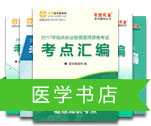发烧 Fever
(1)3天来,口腔温度从摄氏37度6分,一直升到摄氏40度。
The temperature has risen steadily from 37.6°C to 40°C orally over the past 3 days.
发烧
发烧 become feverish; have a temperature
发高烧 have a high fever
平常有微热,有几次升到38.4度 have low grade (slight) fever to 38.4°C on a few occasions
没有发烧 be afebrile; have no fever
ex1:在发烧期间,他的平均体温是摄氏39度。
He ran a febrile course with an average temperature of 39°C.
ex2:他在患病期间尿量减少,并且发烧。
He was obliguric and feverish (febrile) throughout the course.
体温升高
体温上升 have an elevation of temperature form www.med66.com
发高烧伴随恶寒 have high temp. associated with chill
体温升升,有恶寒 have chills with high temperature
ex1: 体温升到摄氏39度2,腹部也明显地膨胀了起来。
The temp. rose( went up ) to 39.2°C and the abdominal distension became marked.
ex2:最近8天的口腔温度升到37.8°C,但后来一直在37.2°C以下。
The oral temp. was elevated to 37.8°C during the past 8 days, but thereafter remained below 37.2°C.
(2)大约在4月底,他的体温,自然地降到摄氏37度。
About the end of April, his temperature dropped to 37°C spontaneously.
体温降低
体温急速下降 one's fever falls (abates; declines) promptly
体温开始减低 fever began to remit体温似乎是减退了 fever seemed to abate
体温降到正常 fever dropped (was reduced) to normal
体温慢慢地下降(上升) with slow lysis ( cirsis) of fever
体温一天一天地低下来 fever became lower day by day
ex1:2天前的体温几乎恢复正常,今天再升到摄氏38.3度了。
The fever, which went down almost to normal 2 days ago, rose to 38.3°C again today.
ex2:病发后10天就退烧了。
Fever disappeared 10 days after onset of illness.
(3)他的直肠体温,下午一直停留在摄氏40度。
He continued to have a temperature with spiking in the afternoon to 40°C by recutum.
体温不退
ex1:已发烧10天;但最后3天未高过37度2分。
Fever was present for 10 days; it did not exceed 37.2°C during the last 3 days.
ex2:最初24小时的体温,在摄氏37.2与38.3度之间。
The temperature during the first 24 hours varied between 37.2°C and 38.3°C.










 扫一扫立即下载
扫一扫立即下载


